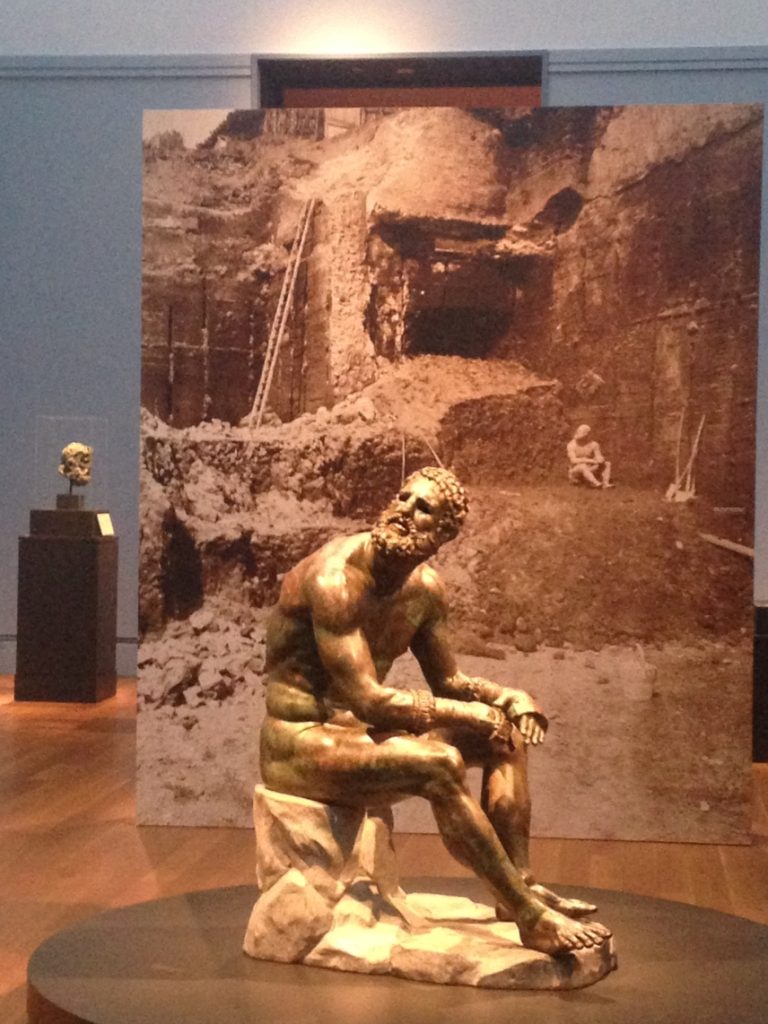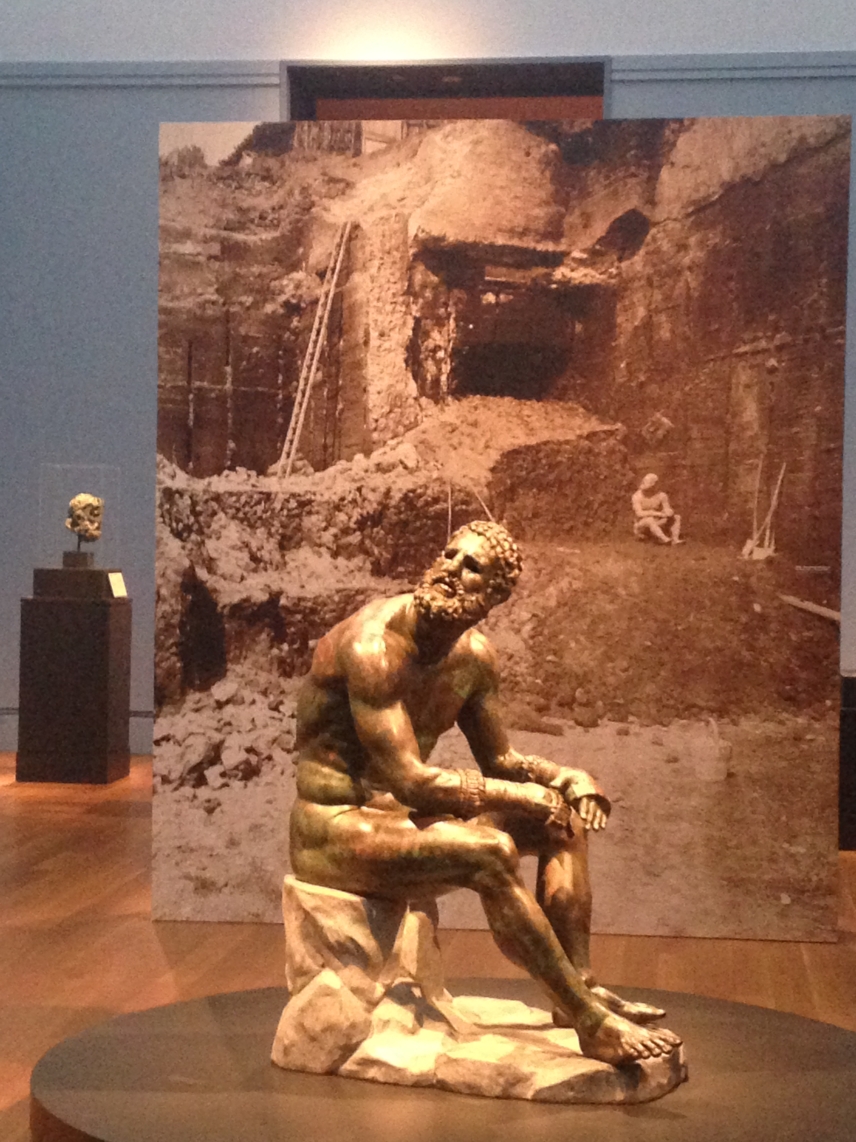
Exceptionally Well-Conserved Almost Life-Size Relief Statues Discovered in Pompeii Dig

New Find in Pompeii Illuminates Female Religious Positions in Ancient Rome
Pompeii, the ancient Roman city dramatically preserved by the eruption of Mount Vesuvius in 79 CE, has revealed yet another extraordinary archaeological find. On April 2, 2025, researchers digging at a necropolis close to the city’s eastern entrance, Porta Sarno, stumbled upon a nearly life-sized funerary relief illustrating two human figures—a male and a female—thought to be part of a grand tomb structure.
Situated in a burial site where over 50 cremation tombs have been previously discovered, this latest relief adds to a wealth of artifacts that aid in reconstructing the social and religious dynamics of ancient Pompeii. Although the identities of the man and woman are still unknown due to the absence of inscriptions, archaeologists are highlighting the relief’s symbolism and artistic merit.
A Look into Republican-Era Artistry
What makes this find particularly intriguing is the evident age and artistic quality of the relief. Experts from the Pompeii Archaeological Park note that its style indicates it dates back to the Roman Republic—rendering it a remarkable discovery. Most artifacts found in Pompeii stem from the Imperial era, thus Republican-period pieces, particularly of this magnitude and detail, provide invaluable insights into earlier Roman culture.
The relief is meticulously carved, showcasing an impressive attention to detail. The male figure is depicted in a traditional Roman toga, draped over his left shoulder—denoting civic identity or social standing. In contrast, the female figure exhibits complexity in both attire and symbolism, captivating scholars and sparking new inquiries in the study of Pompeii.
Priestess or Matron? Deciphering the Woman’s Role
While initial observations imply that the duo may be a married couple, Gabriel Zuchtriegel, director of the Pompeii Archaeological Park, advises caution. “Sometimes you find two men, or they might come in threes,” he shared with The Guardian. Lacking any inscription, the true identities and relationship of the figures remain a topic of speculation—perhaps a mother and son, or an elder female and a younger companion.
Nonetheless, researchers are inclined to interpret the woman as a priestess—potentially of Ceres, the Roman goddess associated with agriculture, fertility, and motherhood. Indicators supporting this interpretation include her ceremonial attire, the religious symbols she carries, and the impactful symbolism of her jewelry.
She is beautifully depicted wearing a sizable cloak and veil, tunic, and exquisite amphora-shaped earrings. Around her neck, she wears a necklace featuring a lunula pendant—a crescent moon-shaped charm linked to femininity, fertility, and sacred protection. Lunulae were typically worn by young females and sometimes kept as talismans throughout a woman’s life phases.
In her right hand, the figure clasp a laurel bough—a plant often utilized in Roman religious rites to sanctify spaces and confer blessings. In her left hand, she appears to grasp a papyrus scroll, enhancing her aura of intellectual or ceremonial authority.
“Priestesses held significant positions in the public domain,” Zuchtriegel remarks. “They occupied a position of influence quite distinct from other women and closely akin to male priests.”
The inferred identity of the woman challenges longstanding assumptions regarding the domestic confines of Roman women. If she indeed was a priestess, she would have played a crucial role within both the religious and civic spheres of Pompeii.
Context in the Porta Sarno Necropolis
The Porta Sarno necropolis, where this relief was found, is already notable for its elaborate funerary architecture. Prior excavations in the region have uncovered a grand arch and numerous stelae marking the graves of cremated individuals. This context implies that the figures commemorated by the relief belonged to Pompeii’s social elite.
While it remains uncertain whether the relief was primarily decorative or commemorative, such artistic endeavors highlight the significance of memorialization within Roman culture. Elite families frequently invested in symbolic representations to ensure their legacy and societal status endured, even after death.
Cultural Significance and Upcoming Exhibition
Alongside its scientific and cultural importance, the discovery will feature prominently in the forthcoming exhibition Being a Woman in Ancient Pompeii, which opens on April 16, 2025, at the Pompeii Archaeological Park. The exhibition seeks to delve into the various roles women occupied in ancient Pompeian society, providing a broader narrative beyond domestic roles and revealing stories of influence, spirituality, and public service.
The intricate portrayal of the potential priestess—her expressive features, religious adornments, and ceremonial stance—offers an invaluable glimpse into how women in ancient Rome may have leveraged religious roles to acquire societal agency.
Ongoing Discoveries
This new relief adds to an expanding list of remarkable finds uncovered in Pompeii in recent years. Other noteworthy discoveries include a prison bakery likely operated by enslaved workers, elegant frescoes depicting mythological themes, and